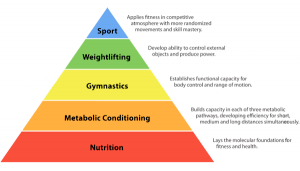As you know, we are trying to kickstart everyone into a Nutrition PLAN. Not a challenge, but a PLAN…a lifestyle. In addition to getting measured with the InBody, it’s a good idea to have a strategy in place as to how you will improve your nutrition to maximize your results. As discussed in a previous post, there are several options to choose from as this is not a “one size fits all” deal. What works for one may not work for another.
Below we quickly outline just a few options that are available to you. Of course there are others! This is where you need to do some legwork outside of the gym and figure out what works best for YOU!
Whole30 and Paleo
Whole30 is the strictest plan of them all. With Whole30, you eliminate certain foods from your diet including added sugar, alcohol, grains, dairy and legumes for 30 days, and then slowly reintroduce the food groups one at a time, to see how your body responds. These food groups may have a negative impact on your health and fitness. So what can you eat on this plan? Meat, seafood, eggs, vegetables, some fruit, good fats and clarified butter or ghee.
See: www.whole30.com
The Paleo diet is also known as the “Cave Man” diet. It is similar to Whole30, but not as restrictive. The diet suggests only consuming foods from nature (meats, eggs, fish, vegetables, nuts, seeds and fruits).
Both Whole30 and Paleo emphasize clean eating and real food (no processed or junk foods). Both cut sugar, grains, dairy, alcohol and legumes. The major difference being that Paleo only eliminates refined sugar, while Whole30 does not allow sugar of any kind. You can always start with Whole30 followed by the less restrictive Paleo diet.
See: www.thepaleodiet.com and https://ultimatepaleoguide.com/
Intermittent Fasting
Intermittent Fasting (IF) is exactly what it sounds like; a pattern of eating that cycles between periods of fasting and eating. It does not specify certain foods or food groups that you can or cannot eat, but rather WHEN you should be eating. The most popular patterns are the 16/8 method, eat-stop-eat and the 5:2 diet. By making you eat fewer calories, these methods *should* help you lose weight as long as you are not over-eating during the allowed eating times.
See: http://www.healthline.com/nutrition/intermittent-fasting-guide#section1 and https://www.bodybuilding.com/content/intermittent-fasting-science-and-supplementation.html
IIFYM (Macro Counting)
Macros, short for macronutrients (proteins, fats and carbohydrates), is the basis of Flexible Dieting / IIFYM (If It Fits Your Macros). It takes calorie counting one step further by additionally counting macronutrients – grams of protein, carbs and fats – to eat within your allotted calories. It is a good way to handle portion control and encourages you to make smarter food choices to fit within your macronutrient goals. There are several online calculators available to help you find your suggested macronutrient breakdown.
See: https://www.iifym.com/iifym-calculator/ and http://www.trimmedandtoned.com/beginners-guide-to-iifym/
Renaissance Periodization Auto Diet Templates
If you are looking for more structure, the RP Auto Diet Templates may be right for you. You can choose from either “Cut” or “Mass” templates and are provided with an Excel spreadsheet based on your gender, current weight and goal (lose fat or gain muscle). The templates provide meal plans for non-training days, light, moderate and hard training days and provide your allotted macronutrient breakdown for each meal, along with suggested foods that fit within the template guidelines.
RP Auto Diet Templates are $109. However, if CFJC can get at least 15 people, RP will provide us with a discount code for $20 off the template. CFJC members: If you are interested in purchasing, please contact Coach Sam aka STG (Samantha Null).
See: www.renaissanceperiodization.com
EnhancedNRG Personalized Meal Plans…aka a Customized Plan from the infamous STREAKY!
These meal plans have the macro-nutrient goals that RP does, but they are more precise and customized than the RP Auto Diet templates. You will consult with Streaky and she provides you with a customized plan to fit your goals based on your current status, and these are updated usually once or twice a month based on how your body is responding. Her plans spell out exactly what foods and what amounts you will be eating for each meal so there is no guesswork.
See: www.enhancednrg.com
As you can see, there are several options available for improving your diet and nutrition. You may start with one and decide to move to another. This is a fluid choice. A lifestyle choice. As long as you are making better decisions, you are moving in the right direction. So pick a plan, start and if it isn’t working, find one that does! Please reach out to one of your CFJC coaches if you would like to discuss one of the plans in further detail.
WRITTEN BY: Janna Davis
8/2/2017



